While telehealth, mobile health apps, and wearable technology are all growing for mainstream consumers, there are gaps in adoption based on where a person lives, their health insurance plan type, race/ethnicity, sexual orientation and gender.
Thanks to the team at Rock Health, we know more about these gaps explained in their report, Startup innovation for underserved groups: 2021 digital health consumer adoption insights, published this week.
The report examines three areas of digital health adoption:
- Live video telemedicine
- Wearable technology ownership, and
- Digital health tracking.
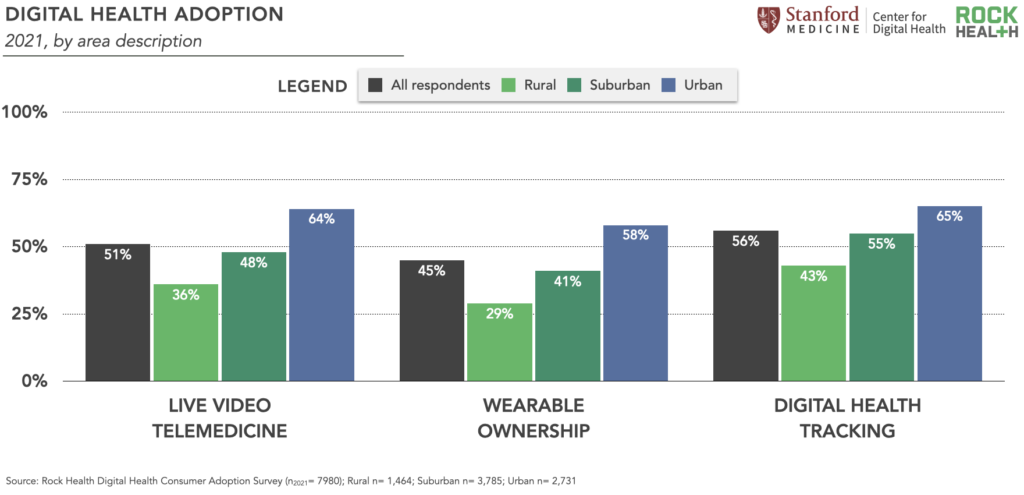
We all know the mantra that our ZIP code impacts our health and well-being more than our genetic code. For digital health adoption, where we live in terms of urban, suburban, or rural environment impacts our use of real-time telemedicine, wearable tech ownership, and digital health tracking.
Urban dwellers in the U.S. are more likely to take advantage of all three types of s shown in the first chart from the report. People living in rural areas were least likely to use digital health techs. Across the three modes, health citizens were most likely to track health digitally, followed by use telemedicine, and lastly, own wearable tech (like a smartwatch or dedicated tracking device like a Fitbit).
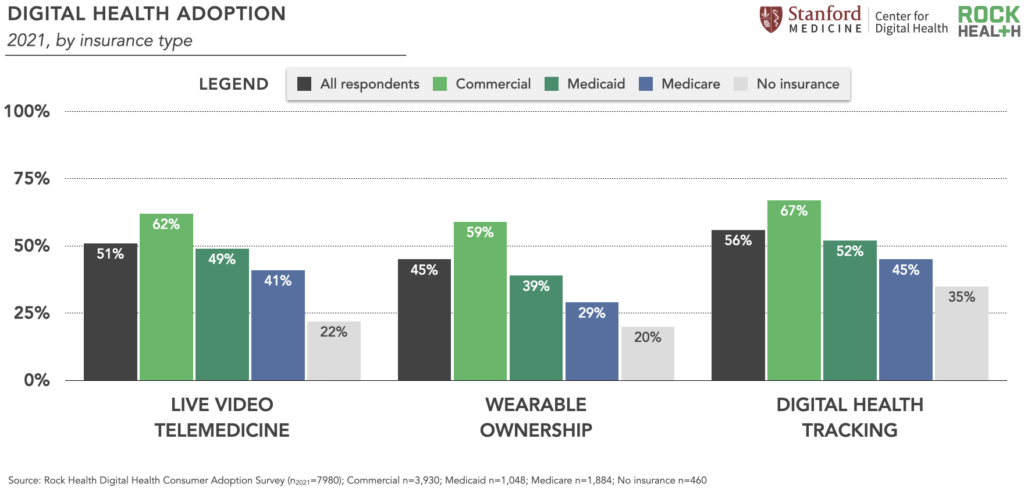
By health insurance plan type, those commercially insured were most likely to use digital health, led by health tracking and live telemedicine. The biggest difference among the three digital health types was for wearable tech ownership, where members of commercial insurance plans were far more likely to own a wearable device at a margin of 59% compared with 39% of people in Medicare, 29% of those enrolled in Medicaid, and 20% of the uninsured.
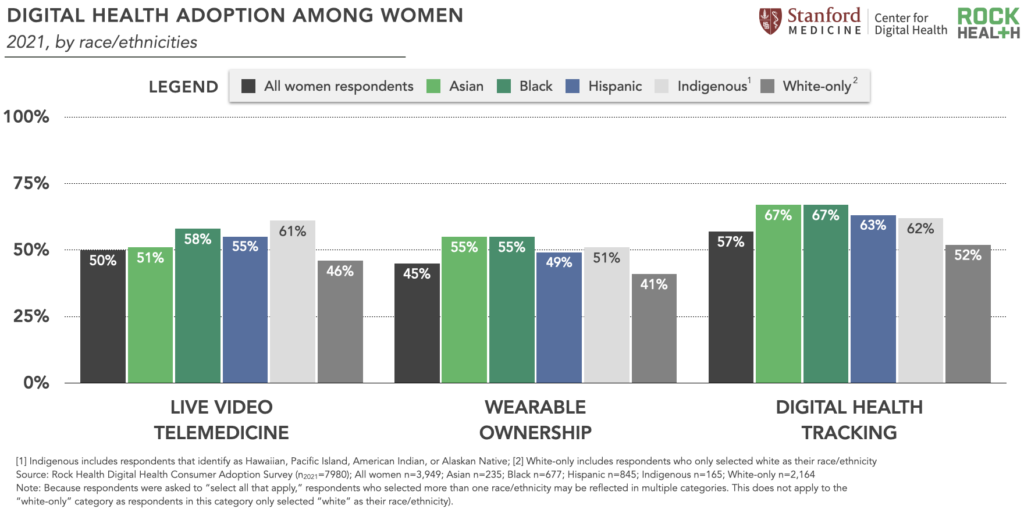
Women have reached digital health use parity with men overall, Rock Health noted in this year’s data.
By race, the findings illustrate relatively higher engagement among Black and Hispanic women consumers than for White women for all three categories. I’ve observed this phenomenon in other studies I have worked on as well as collegial researchers, which I’ve hypothesized could represent a sort of leap-frogging to digital health modes for the ability to access care (via telehealth) as well as bolster self-care for people lacking access to face-to-face treatment alternatives. Check out the growing conversation on “techquity” for more insights into digital health equity.
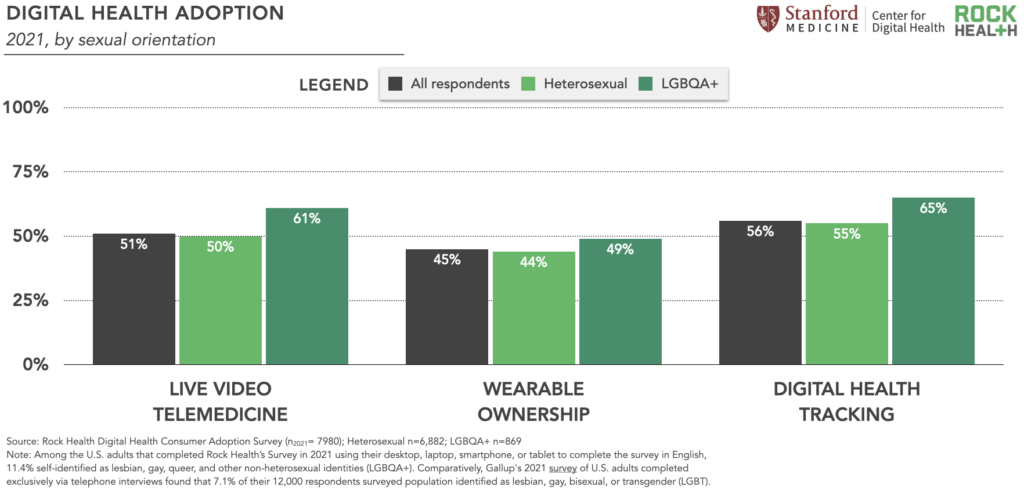
By sexual preference, we also see slightly greater adoption of digital health tech (at the margin) among people who identify as LGBQA+ compared with heterosexual folks. This is especially evident for telemedicine and digital health tracking.
Rock Health points out the long history of clinical discrimination experienced by these communities, which makes digital health tech ripe opportunities to help address care gaps. Rock Health calculated that digital health startups that expressly serve queer and transgender people raised $311mm in 2021, the highest year recorded, led by Folx and Plume.
The Rock Health team concludes the report with this caveat:
“While we’re encouraged to see higher self-reported digital health usage rates in our Survey data, lower-than-average reported satisfaction and trust among historically marginalized communities underscore the importance of designing safe, accessible, and culturally attuned healthcare experiences. We’re excited to continue to support, learn from, and elevate the voices of the innovators and startups devoted to building solutions alongside the communities they intend to serve.”
For this seventh annual consumer digital health adoption survey, Rock Health polled 7,980 U.S. adults 18 and over in August 2021.
The study is meant to inform our ongoing conversations and dialogue on digital tech adoption and public health, and not be the ultimate “arbiter,” in Rock Health’s words, for the topic of digital health equity.
Health Populi’s Hot Points: With the promise of any new technology, the S-curve of adoption ramps up from the earliest adoptions then growing to more mainstream, popular use across demographics. For health care, the issues of trust and risks for determinants of health play into disparities leading to digital and health equity.
These include the long-time risk categories of education, job security, health insurance security, food security, transportation, and clean environments, along with more contemporary risks of lack of broadband connectivity and the growing realization of systemic racism and bias in medical treatment.
Rock Health’s call-to-action in this report is the realization that,
“Continuing to tackle these barriers is a multi-faceted endeavor that requires tight-knit collaboration across the healthcare system, public health efforts, city infrastructure, policy gurus, and the many more stakeholders who touch the varied social and economic determinants of health.”
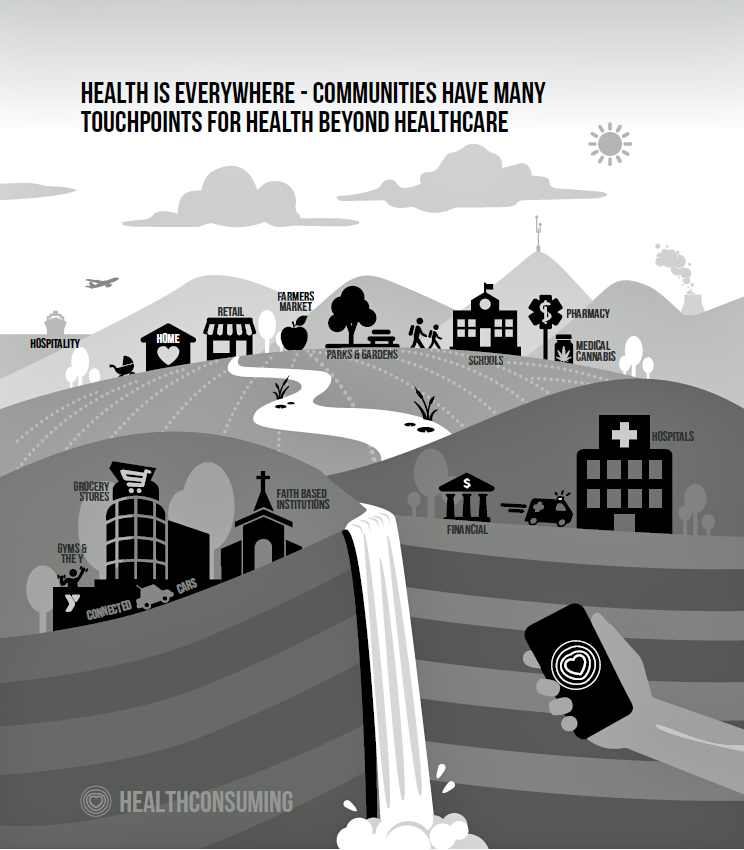
Those collaboratives have begun to take shape between the legacy health care system (hospitals, clinics and medical practices, pharma, and health plans) with retail health, grocery chains, community touchpoints (like the Y and the local trusted barbershop), financial services, and consumer goods.
Health/care is everywhere, beyond medical care.
Solving the digital health gaps identified in the Rock Health report requires more than a technology fix (including all health citizens’ access to broadband/WiFi).
The driving forces underneath digital and health equity are social, political, financial, and civil. Tech is necessary….but not sufficient.




 Thank you FeedSpot for
Thank you FeedSpot for